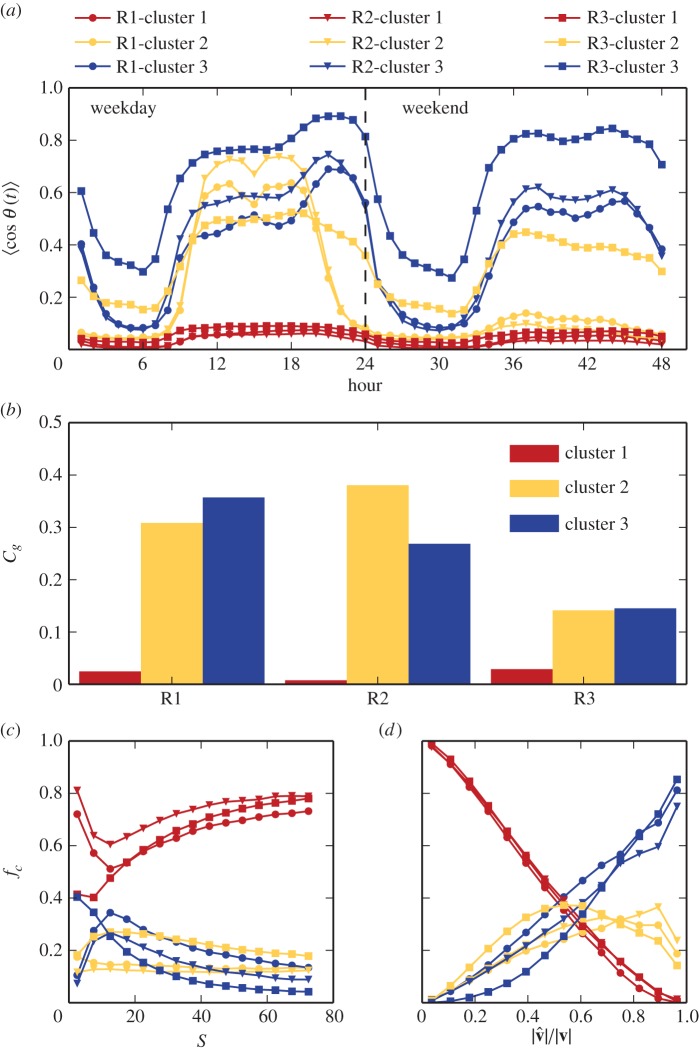Figure 4.
Characterizing social ties based on similarity of movement over time. (a) We perform k-means clustering on the set of similarity timeseries from edges in the network. We find three groups emerge in each city: (i) acquaintances who have low levels of similarity across all times, (ii) co-workers who have elevated similarity during work hours on weekdays, but lower levels on weekends, and (iii) family/friends who have high similarity on nights and weekends. (b) For each city, we construct subgraphs containing only edges in a single cluster. We find that these subgraphs retain high clustering coefficient (Cg) within the co-worker and family/friend group, whereas acquaintances are far less likely to have ties among each other. Finally, we explore how a user's behaviour correlates with the mobility characteristics of their immediate social network. (c,d) We group nodes based on their mobility characteristics (unique locations visited S and predictability  ) then compute the fraction of edges that belong to each of the identified clusters for each node in the group. Individuals that are more exploratory (visit more unique places) tend to have higher fractions of acquaintances ties than individuals with lower mobility while the reverse trend is observed for the most predictable individuals.
) then compute the fraction of edges that belong to each of the identified clusters for each node in the group. Individuals that are more exploratory (visit more unique places) tend to have higher fractions of acquaintances ties than individuals with lower mobility while the reverse trend is observed for the most predictable individuals.

